Awesomeness Round-up – 7/26/10
- By Maggie Masetti
- July 26, 2010
- 1 Comment
This brand new set of photos shows one of the James Webb Space Telescope’s primary mirror segments, all coated in gold. This isn’t a flight mirror, but what’s known as an engineering design unit (EDU). The real segments will look just like this, though. The real ones are currently being made and tested – they will ultimately be coated in gold just like this though, because gold reflects red light extremely well. (Which is what you want in an infrared telescope.)
We found this video of astronomer Neil deGrasse Tyson sounding off about science fiction movies:
This reminded us of when we talked about our own pet peeves for science in the movies. This feels like a topic we should revisit, y/y? Maybe we should take a more positive spin on it and talk about what we do like? What do you think?
It’s hard to believe that 41 years ago, men walked on the Moon for the very first time. We just passed the anniversary last week.
In the last link round-up, we talked about some record-breakers, like the brightest Gamma Ray Burst yet, and the most powerful black hole jets discovered so far. Well, how about the biggest star we’ve ever seen? It’s called R136a1 and is about 265 times the mass of our Sun! R136a1 is the largest of a group of large stars found by Paul Crowther (Sheffield University, UK) and his team using data from the Very Large Telescope facility in Chile and the Hubble Space Telescope.
The location of these immense stars is in the Large Magellanic Cloud, a neighboring galaxy, in a cluster of stars called RMC 136a, located about 165,000 light-years away. These stars have very hot surface temperatures (more than seven times hotter than our Sun), are incredibly bright (“If [R136a1] replaced the Sun in our Solar System, it would outshine [it] by as much as the Sun currently outshines the full Moon,” Sheffield told BBC News!), incredibly massive, and in the case of R136a1, about 30 times the radius of our Sun! The BBC article has even more information about these monster stars.
Want to try out a neat desktop planetarium widget? This one looks pretty cool.
Buckyballs in space? Buckyballs, or soccer-ball-shaped carbon molecules named after Buckminster Fuller’s geodesic domes, were thought to float around in space – but for the first time we’ve detected them, using the Spitzer Space Telescope. (See, I told you infrared telescopes were cool!) Oh, and they are the largest molecules known to exist in space. You can read more about this discovery in this NASA feature article. Want to see what the Spitzer data looks like?
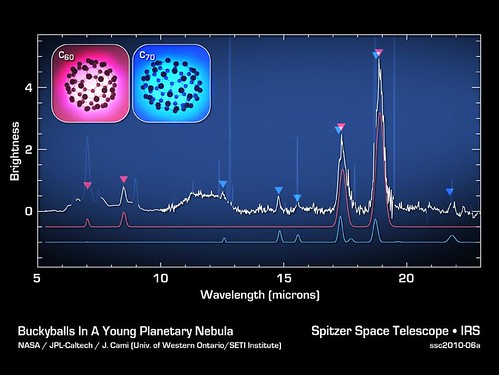
Image credit: NASA/JPL-Caltech/University of Western Ontario


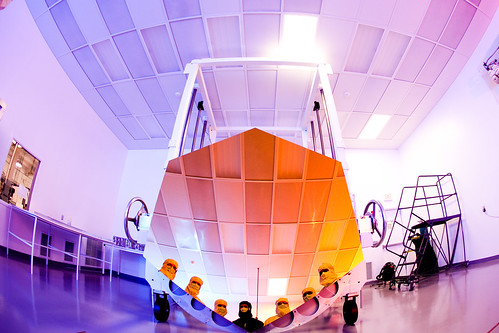
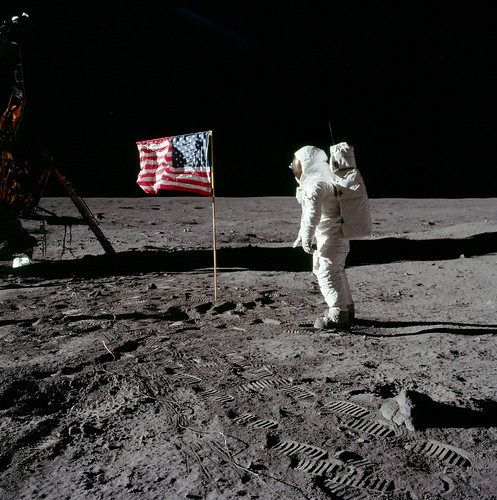
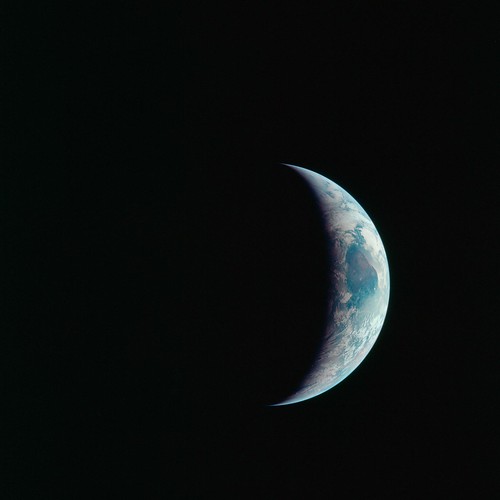
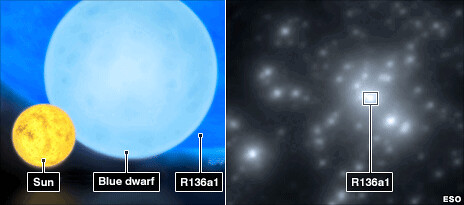


[…] NASA’s Blueshift Blog’s own quick roundup of the best of the week’s new is here. […]